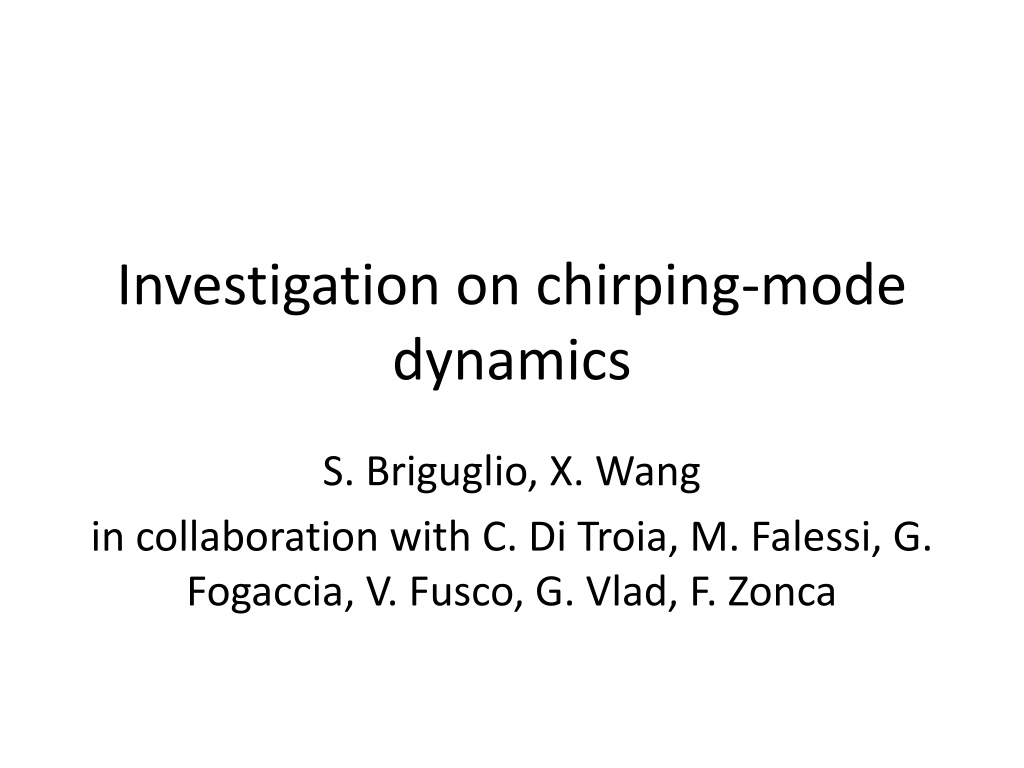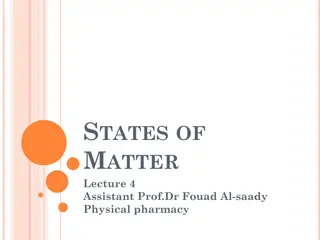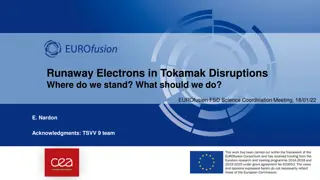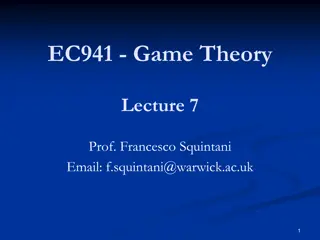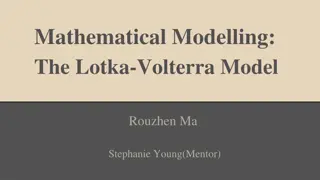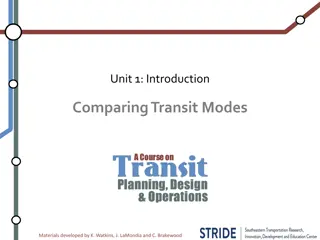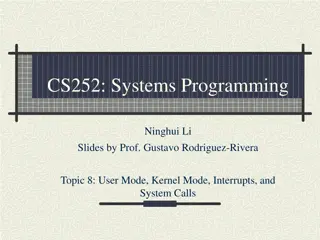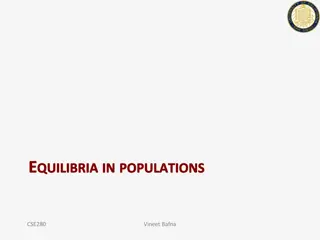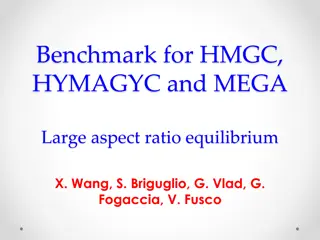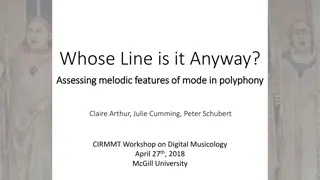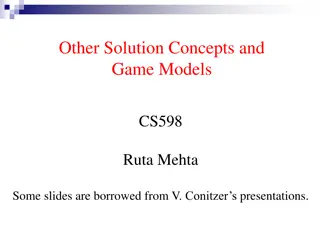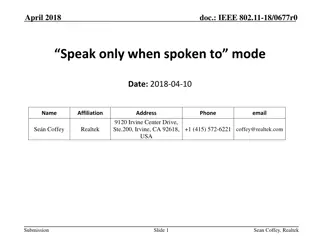Exploring Chirping Mode Dynamics in Tokamak Equilibria
Chirping Alfvén modes in Tokamak equilibria exhibit frequency variation, allowing for maximizing power extraction from fast particles. Investigation of a chirping mode with Hamiltonian-Mapping and analysis of relevant phase-space slices reveal insights into the dynamics, resonance, and density gradients associated with the chirping phenomenon.
Download Presentation

Please find below an Image/Link to download the presentation.
The content on the website is provided AS IS for your information and personal use only. It may not be sold, licensed, or shared on other websites without obtaining consent from the author. Download presentation by click this link. If you encounter any issues during the download, it is possible that the publisher has removed the file from their server.
E N D
Presentation Transcript
Investigation on chirping-mode dynamics S. Briguglio, X. Wang in collaboration with C. Di Troia, M. Falessi, G. Fogaccia, V. Fusco, G. Vlad, F. Zonca
Chirping Alfvn modes Alfv n modes in Tokamak equilibria often exhibit frequency variation ("chirping") in the nonlinear phase: it allows maximising power extraction from fast particles
Investigation of a chirping mode with HMGC Let us investigate a n=3 EPM, exhibiting frequency chirping in the nonlinear phase Frequency chirping is apparent in the nonlinear phase
Analysis of the most relevant phase- space slices Let us identify the most relevant phase-space structures (that is, those that resonate more effectively with the mode) We cut the phase space into slices characterised by two constants of motion (in our case, M and Ueq0); such slices do not exchange particles Once identified the most relevant slices, we can investigate their dynamics by Hamiltonian-mapping techniques: sampling each slice with test particles Let us start from the slice yielding the largest contribution to the drive during the linear stage ("linear resonance")
"Linear resonance" Markers are colored according to their initial value of the equatorial r
"Linear resonance" Markers are colored according to their initial value of the equatorial r An island-like structure is formed around the resonance radius, drifting inwards as the frequency chirps downwards
"Linear resonance" Markers are colored according to their initial value of the equatorial r An island-like structure is formed around the resonance radius, drifting inwards as the frequency chirps downwards It corresponds to a density flattening region, delimited by two large density gradients 1 nH a.u. 0.8 0.6 0.4 0.4 0.45 0.5 0.55 0.6 0.65 req/a
"Linear resonance" The large negative density gradients move inwards and outwards 0.56 r/a 0.52 0.48 flattening boundaries 0.44 0 200 400 600 800 t/t tA
"Linear resonance" The large negative density gradients move inwards and outwards As frequency decreases, the resonance region moves inwards ( res'(r)>0) 1 w wres w w 0.56 0.8 r/a w w0 0 0.6 0.52 0.4 0.48 w w1 1 flattening boundaries resonance boundaries 0.2 0.44 0 0 0.2 0.4 0.6 rres0 0.8 1 0 200 400 600 800 r rres1 t/t tA
"Linear resonance" The large negative density gradients move inwards and outwards As frequency decreases, the resonance region moves inwards ( res'(r)>0) Until the inner large density gradient remains within the resonance region, it is able to drive the mode 0.56 r/a 0.52 0.48 flattening boundaries resonance boundaries 0.44 0 200 400 600 800 t/t tA
"Linear resonance" The large negative density gradients move inwards and outwards As frequency decreases, the resonance region moves inwards ( res'(r)>0) Until the inner large density gradient remains within the resonance region, it is able to drive the mode The island grows around at a faster rate 0.56 r/a 0.52 0.48 flattening boundaries resonance boundaries 0.44 0 200 400 600 800 t/t tA
"Linear resonance" The large negative density gradients move inwards and outwards As frequency decreases, the resonance region moves inwards ( res'(r)>0) Until the inner large density gradient remains within the resonance region, it is able to drive the mode The island grows around at a faster rate When the frequency chirping is no longer able to accommodate the large gradient in the resonance region, in spite of a nonlinear broadening of such region, the gradient is no longer effective in driving the mode 0.56 r/a 0.52 0.48 flattening boundaries resonance boundaries 0.44 0 200 400 600 800 t/t tA
"Linear resonance" The large negative density gradients move inwards and outwards As frequency decreases, the resonance region moves inwards ( res'(r)>0) Until the inner large density gradient remains within the resonance region, it is able to drive the mode The island grows around at a faster rate When the frequency chirping is no longer able to accommodate the large gradient in the resonance region, in spite of a nonlinear broadening of such region, the gradient is no longer effective in driving the mode Drive falls down 1.2 1010 0.56 1 1010 P r/a 8 109 0.52 6 109 0.48 4 109 flattening boundaries resonance boundaries slice-integrated power 2 109 0.44 0 0 200 400 600 800 t/t tA
Chirping rate and saturation amplitude In the constant-frequency low-growth-rate limit, a certain phase-space resonance ceases to contribute to the drive when the flattening region covers the resonance region; that is, when the gradient drift is ( rgrad)sat / ( res') w wres D Drgradient D Drflattening g g w w r
Chirping rate and saturation amplitude In the constant-frequency low-growth-rate limit, a certain phase-space resonance ceases to contribute to the drive when the flattening region covers the resonance region; that is, when the gradient drift is ( rgrad)sat / ( res') In the chirping case, the resonance region moves along with the resonance radius w wres D Drflattening w w D Drflattening r
Chirping rate and saturation amplitude In the constant-frequency low-growth-rate limit, a certain phase-space resonance ceases to contribute to the drive when the flattening region covers the resonance region: ( rgrad)sat / ( res') In the chirping case, the resonance region moves along with the resonance radius w wres D Drgradient D Drflattening w w D Drflattening r This requires a larger gradient drift
Chirping rate and saturation amplitude In the constant-frequency low-growth-rate limit, a certain phase-space resonance ceases to contribute to the drive when the flattening region covers the resonance region: ( rgrad)sat / ( res') In the chirping case, the resonance region moves along with the resonance radius w wres D Drgradient w w D Dw w r This requires a larger gradient drift ( rgrad)sat ( )sat / ( res')
Chirping rate and saturation amplitude In the constant-frequency low-growth-rate limit, a certain phase-space resonance ceases to contribute to the drive when the flattening region covers the resonance region: ( rgrad)sat / ( res') In the chirping case, the resonance region moves along with the resonance radius w wres D Drgradient w w D Dw w r This requires a larger gradient drift ( rgrad)sat ( )sat / ( res') The chirping rate can then be estimated as ( t)sat ( res') ( rgrad/ t)sat
Chirping rate and saturation amplitude In the constant-frequency low-growth-rate limit, a certain phase-space resonance ceases to contribute to the drive when the flattening region covers the resonance region: ( rgrad)sat / ( res') In the chirping case, the resonance region moves along with the resonance radius This requires a larger gradient drift ( rgrad)sat ( )sat / ( res') The chirping rate can then be estimated as ( t)sat ( res') ( rgrad/ t)sat Moreover, rgrad/ t ~ A(t)
Chirping rate and saturation amplitude In the constant-frequency low-growth-rate limit, a certain phase-space resonance ceases to contribute to the drive when the flattening region covers the resonance region: ( rgrad)sat / ( res') In the chirping case, the resonance region moves along with the resonance radius This requires a larger gradient drift ( rgrad)sat ( )sat / ( res') The chirping rate can then be estimated as ( t)sat ( res') ( rgrad/ t)sat Moreover, rgrad/ t ~ A(t) Then ( t)sat ~ ( res') Asat
Chirping rate and saturation amplitude This scaling is well satisfied by ORB5 simulations, performed with/wihout FLR effects, different energetic-particle density, different bulk-plasma temperature gradient a) nEP/ni=0.0075 b) nEP/ni=0.0080 c) nEP/ni=0.0085
Richer non linear dynamics This agreement does not mean that power exchange between particles and the mode can be described just in terms of the dynamics of the "linear resonance" (that is, the relevant one in the linear stage) The figure reports the label Ueq0 for the dominant phase-space slices at each time (the other label is M=0 at each time) A succession of different slices contributes to the growth of the mode 2.4 2.2 Ueq0/vH0 2 1.8 1.6 linear resonance 1.4 1.2 1 0.8 0 100 200 300 400 500 600 700 t/t tA A0 0
Richer non linear dynamics After considering the "linear resonance", let us consider one of the resonances that dominate during the non linear stage ("non linear resonance") This non linear resonance yields a little drive during the linear stage; why does such drive strongly grow in the non linear stage? 2.4 0.0025 2.2 0.002 P linear resonance Ueq0/vH0 2 1.8 0.0015 1.6 linear resonance 0.001 1.4 non linear resonance non linear resonance 1.2 0.0005 1 0.8 0 0 100 200 300 400 500 600 700 0 100 200 300 400 t 500 600 700 800 t/t tA A0 0
"Non linear" resonance The reason is that the resonance region and the mode peak, originally separated, move toward each other While the resonance region moves inwards, the mode peak drifts outwards, due to the radial slope of the continuum 0.6 r/a 0.55 0.5 0.45 0 200 400 600 800 t/t tA
"Non linear" resonance The reason is that the resonance region and the mode peak, originally separated, move toward each other While the resonance region moves inwards, the mode peak drifts outwards, due to the radial slope of the continuum As the resonance region meets mode peak, the drive yielded by this slice increases 0.6 r/a 0.55 0.5 0.45 0 200 400 600 800 t/t tA
"Non linear" resonance The reason is that the resonance region and the mode peak, originally separated, move toward each other While the resonance region moves inwards, the mode peak drifts outwards, due to the radial slope of the continuum As the resonance region meets mode peak, the drive yielded by this slice increases It becomes the dominant contribution at a certain time; then, another slice will take over 0.0025 0.002 P linear resonance 0.0015 0.001 non linear resonance 0.0005 0 0 100 200 300 400 t 500 600 700 800
Some other aspects... Let us follow a certain bunch of particles, coloring them according to the instantaneous power-transfer level
Non adiabatic dynamics Let us follow a certain bunch of particles, coloring them according to the instantaneous power-transfer level The radial displacement of the orbit in a bounce time is of same order of its width
Non adiabatic dynamics Let us follow a certain bunch of particles, coloring them according to the instantaneous power-transfer level The radial displacement of the orbit in a bounce time is of same order of its width non-adiabatic dynamics
Continuous trapping/detrapping The non adiabatic character of the dynamics emerges from the continuous trapping/detrapping phenomenon
Continuous trapping/detrapping The non adiabatic character of the dynamics emerges in the continuous trapping/detrapping phenomenon Let us resort to Lagrangian Coherent Structures
Continuous trapping/detrapping The non adiabatic character of the dynamics emerges in the continuous trapping/detrapping phenomenon Let us resort to Lagrangian Coherent Structures Superposition of repulsive and attractive lines would correspond, for constant frequency and mode amplitude, to the separatrix between trapped and unbounded trajectories repulsive attractive
Continuous trapping/detrapping The non adiabatic character of the dynamics emerges in the continuous trapping/detrapping phenomenon Let us resort to Lagrangian Coherent Structures Superposition of repulsive and attractive lines would correspond, for constant frequency and mode amplitude, to the separatrix between trapped and unbounded trajectories The channels left open between attractive and repulsive lines allow for an incoming particle flow from the lower edge (trapping) and an outgoing flow from the upper edge (detrapping) repulsive attractive
Continuous trapping/detrapping 4 initially untrapped particles (for the sake of clarity, we plot a twin marker in the interval [2 ,4 ]) - black remains untrapped - blue and green become and remain trapped in the wave - red gets trapped and, then, detrapped
Zonal-flow and multi-n effects Preliminary results: is chirping modified by the inclusion of zonal flows and/or co-presence of more toroidal modes? ORB5: n=5, without zonal flows n=5, with n=0 zonal flows without with
Zonal-flow and multi-n effects ORB5: n=5 n=1-6 n=5 n=1-6
Zonal-flow and multi-n effects ORB5: n=5 n=0-6 n=5 n=0-6
Multi-n effects HMGC: n=4 n=2-4 single-n (4) multi-n (2, 3, 4) 10-4 0.28 w wn=4 10-5 w w E 0.26 10-6 0.24 10-7 10-8 0.22 10-9 En=4 0.2 10-10 10-11 0.18 0 200 400 600 800 t
Summary Chirping Alfv n mode dynamics has been investigated by HMGC and ORB5 simulations The possibility of modifying its frequency allows for a prolonged power transfer from particles to the mode Different resonances become relevant once that dominating the linear stage exhausts its drive capability. Their resonance region and mode peak move towards each other; as they meet, the drive yielded by the resonance is strongly enhanced The non adiabatic character of the dynamics, leading to a continuous trapping/detrapping of particles, has been shown Preliminary results of simulations including zonal flows and/or multi-n dynamics show that frequency chirping can be affected
"Linear" resonance Let us plot the maximum (negative) density gradients, along with the boundaries of flattening and resonance region 0.56 r/a 0.52 0.48 flattening boundaries resonance boundaries 0.44 0 200 400 600 800 t/t tA
Continuous trapping/detrapping The non adiabatic character of the dynamics emerges in the continuous trapping/detrapping phenomenon Here, only markers that get trapped are coloured (red) If they get detrapped, they are coloured blue
